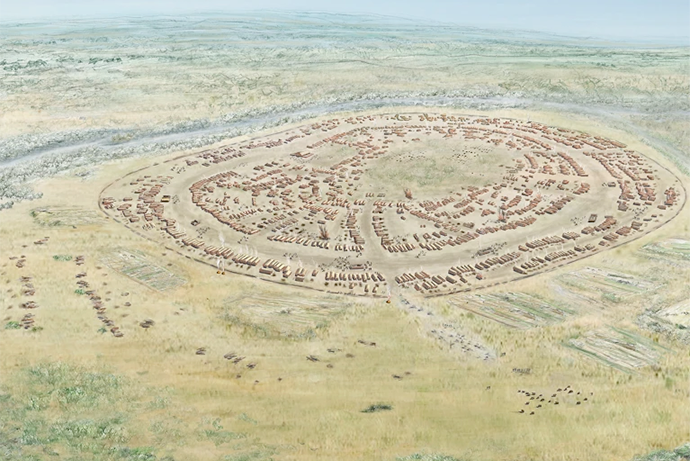“Around 6,000 years ago, a group known as the Cucuteni–Trypillia culture developed egalitarian settlements north of the Black Sea and created the region’s earliest urban centres. Then, after two millennia, they vanished.
The vase is tan with abstract designs in black: curved triangles that swoop into circles, a motif with an elegant, organic flow. It looks contemporary, or perhaps like the work of a mid-century artist on display at the Museum of Modern Art in New York City.
This ceramic piece is in a museum, but not in any modern wing. Found as fragments in 2006 at an archaeological site in Poduri, Romania, the vase is the work of an unknown artist from some 6,000 years ago. The restored artefact is on display in a museum in northwestern Romania.
The potter who created it was a member of the Cucuteni–Trypillia culture, a pre-Bronze Age society that thrived in what is now Romania, Moldova and Ukraine, where several ‘megasites’ held thousands of homes.
To some archaeologists, these giant settlements are among the world’s first cities, whereas others debate whether they qualify as urban centres. In either case, they represent the largest assemblages of people in early Europe and are one of the first experiments in the urban revolution.”
Who built Europe’s first cities? Clues about the urban revolution emerge
https://www.nature.com/articles/d41586-024-04216-1

